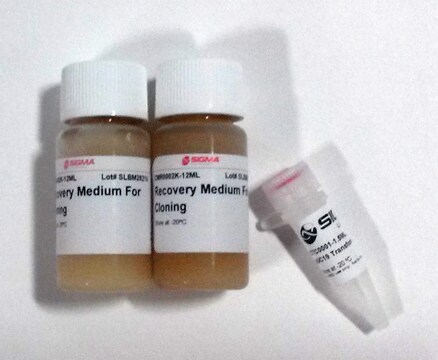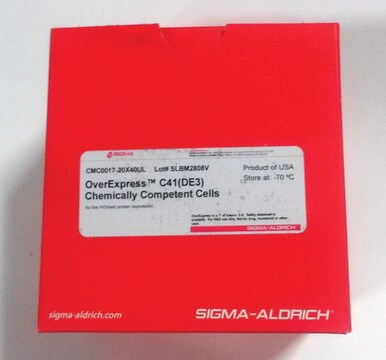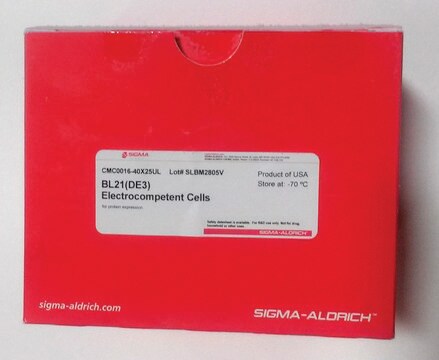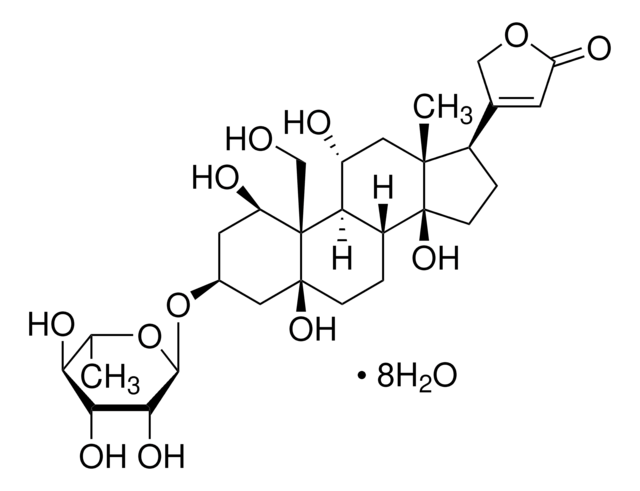71397
Rosetta 2(DE3) Competent Cells - Novagen
Escherichia coli, rod shaped
Synonyme(s) :
BL21 derivatives
About This Item
Produits recommandés
Nom du produit
Rosetta 2(DE3) Competent Cells - Novagen, Novagen′s Rosetta 2 host strains are BL21 derivatives designed to enhance the expression of eukaryotic proteins that contain codons rarely used in E. coli.
Source biologique
Escherichia coli
Niveau de qualité
Fabricant/nom de marque
Novagen®
Conditions de stockage
OK to freeze
Mode de croissance
adherent or suspension
Morphologie
rod shaped
Technique(s)
microbiological culture: suitable
Transformation cellulaire
transformation efficiency: >2×106 cfu/μg
Conditions d'expédition
dry ice
Température de stockage
−70°C
Description générale
This product contains genetically modified organisms (GMO). Within the EU GMOs are regulated by Directives 2001/18/EC and 2009/41/EC of the European Parliament and of the Council and their national implementation in the member States respectively. This legislation obliges us to request certain information about you and the establishment where the GMOs are being handled. Click here for Enduser Declaration (EUD) Form.
Rosetta 2 host strains are BL21 derivatives designed to enhance the expression of eukaryotic proteins that contain codons rarely used in E. coli. These strains supply tRNAs for 7 rare codones (AGA, AGG, AUA, CUA, GGA, CCC, and CGG) on a compatible chloramphenicol-resistant plasmid. The tRNA genes are driven by their native promoters.
DE3 indicates that the host is a lysogen of λDE3, and therefore carries a chromosomal copy of the T7 RNA polymerase gene under control of the lacUV5 promoter. Such strains are suitable for production of protein from target genes cloned in pET vectors by induction with IPTG.
Composants
•2 × 2 ml or 4 × 2 mlSOC Medium
•10 µlTest Plasmid
Avertissement
Informations légales
Code de la classe de stockage
10-13 - German Storage Class 10 to 13
Classe de danger pour l'eau (WGK)
WGK 2
Certificats d'analyse (COA)
Recherchez un Certificats d'analyse (COA) en saisissant le numéro de lot du produit. Les numéros de lot figurent sur l'étiquette du produit après les mots "Lot" ou "Batch".
Déjà en possession de ce produit ?
Retrouvez la documentation relative aux produits que vous avez récemment achetés dans la Bibliothèque de documents.
Les clients ont également consulté
Notre équipe de scientifiques dispose d'une expérience dans tous les secteurs de la recherche, notamment en sciences de la vie, science des matériaux, synthèse chimique, chromatographie, analyse et dans de nombreux autres domaines..
Contacter notre Service technique



